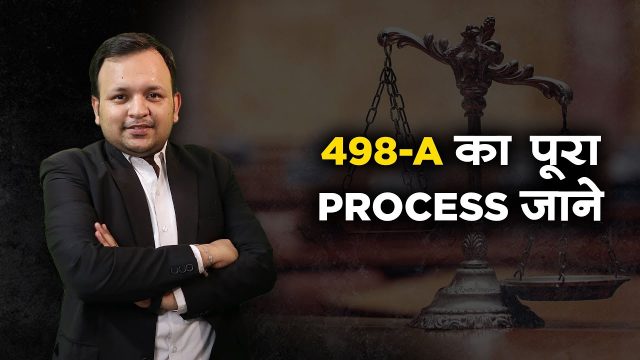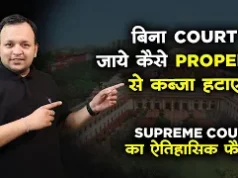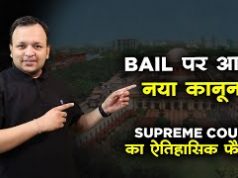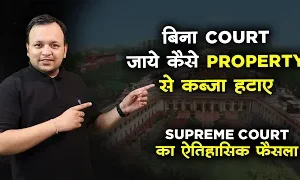The sacrosanct institution of marriage has been existing through generations and has consumed in itself various distorted versions of the same. To correct them, and subsequently, make sure that no innocent life suffers. To address them, and accordingly, ensure that no honest life endures. Various regulations and points of reference have been gotten by different courts, with the most enlightening ones being from the Hon’ble High Court. Such mischievous activities, to be specific: infidelity, abandonment, or brutality, among others, are known to be offenses against marriage or wedding offenses.
Instances of matrimonial offenses continue to rise incrementally and remain undisturbed despite the various protective laws made by the legislation, and steps taken by the law and order maintainers of the society. With each passing day, more and more women are added to the list of victims of these legal offenses.
What is more awful is that the vast majority of these cases go unreported, because of society’s hesitance to recognize its dreary parts and casualty disgracing. The circumstance goes further south when that is clubbed with instability and a questionable future. Society, particularly ladies, is made to have practically no confidence in the law. They for the most part get frightened of the long, ceaseless fights in court, and get terrified of the monstrous measure of assets expected to support them.
What is Section 498A?
Section 498A of the Indian Penal Code (IPC) is reproduced below:
“Husband or relative of husband of a woman subjecting her to cruelty.—
Whoever, being the husband or the relative of the husband of a woman, subjects such woman to cruelty shall be punished with imprisonment for a term which may extend to three years and shall also be liable to fine.
Explanation.—For the purpose of this section, “cruelty” means—
(a) any wilful conduct which is of such a nature as is likely to drive the woman to commit suicide or to cause grave injury or danger to life, limb or health (whether mental or physical) of the woman; or
(b) harassment of the woman where such harassment is with a view to coercing her or any person related to her to meet any unlawful demand for any property or valuable security or is on account of failure by her or any person related to her to meet such demand.”
It deals with the violence done to the woman after her marriage by her husband or her in-laws or any relative of the husband. It prescribes a punishment of 3 years and a fine. It gave a new definition of cruelty. Cruelty can be defined as –
- If the act done is of such a nature that the woman is enticed to commit suicide or cause an injury to herself, which may prove fatal. This was added in the case of Shobha Rani v. Medhukar Reddy. [1] It was held in the case that evidence is required to prove cruelty.
- If the act done is to harass a woman or any other person related to her to meet unlawful demands.
The procedure under Section 498-A of the Indian Penal Code, 1908
- Filing of the complaint under Section 498-A
This is the first stage a complaint is filed in the women’s cell which is known as ‘Parivaad’ in Hindi. It is pertinent to note that an FIR is not registered first in this case by the police. Notice is sent to the opposite party namely the husband and his family members who are accused in the complaint. The case is presented before the mediation center of the concerned police station. The police try that the case is resolved then and there after which a mutual agreement for settlement/reconciliation is signed. But this happens in rare cases and the success of mediation is relatively low in the cases where the crime is heinous.
- Registration of FIR
This is the second stage if the mediation process fails an FIR is registered in the concerned police station by the victim under Section 154 Cr.P.C. and the complainant gets a copy of the FIR free of charge. The accused can get a copy of the FIR by applying to the concerned Magistrate in his jurisdiction.
- Application for Bail
This is the third stage in which the accused has an option to save him from arrest by the police by applying for anticipatory bail under Section 438 Cr.P.C., firstly the anticipatory bail application is submitted to the Sessions Court but if the same is rejected then the application is presented before the Hon’ble High Court. Generally, anticipatory bail is granted because in the case of “Arnesh Kumar vs State of Bihar & Anr.” on 2nd July 2014 it was stated that a person cannot be arrested for an offense where the imprisonment is up to seven years without issuing notice under Section 41A of Cr.P.C.
Secondly, the accused can file an FIR quashing petition under Section 482 of Cr.P.C. before the Hon’ble High Court stating that no cognizable offense is made out from the FIR registered against the accused and he should be granted the relief of quashing of FIR.
- Investigation
This is the fourth stage after the filing of FIR under Section 498-A of IPC, the police investigate and take the statements of all the parties involved in the matter. Although, the statements given before the police officials are not admissible in court but to avoid contradiction in the trial the statements should be given with utmost care and presence of mind. During the investigation, a list is made in which all the articles received by the complainant i.e. the woman in form of ‘streedhan’, and this list is provided to the complainant’s family and also signed by them. After investigation, if the police are of an opinion that no offense is made out then a closure report is filed and if there is an essence of cruelty in the complaint then a challan is filed and presented in the competent trial court.
- Filing of Charge sheet
This is the fifth stage if a closure report is submitted on the FIR then the complainant is given an opportunity for requesting a re-opening of the FIR under protest and if a charge sheet is filed then all the accused are notified to appear in the court and submit a bond to secure their bail. Under Section 207 of Cr.P.C. accused has a right to receive a free copy of the charge sheet.
- Cognizance
This is the sixth stage as soon as the charge sheet is filed the concerned magistrate takes cognizance of the matter. The accused can either challenge the same by filing a revision petition in the concerned Session Court and if it is dismissed by Session Court then a petition under Section 482 Cr.P.C. can be filed in the Hon’ble High Court of concerned jurisdiction.
- Framing of Charges
This is the seventh stage after the Court accepts the charge sheet and takes cognizance of the matter the charges framed against the accused are informed to them and the accused can submit a discharge application with supporting evidence against the charges framed.
- Prosecution Evidence
This is the eighth stage in which the witnesses in favor of the complainant i.e. the prosecution submit their statements. A list is submitted by the prosecutor of all the witnesses for proving the offense under Section 498-A against the accused. Firstly, the public prosecutor calls upon the witnesses in favor of the complainant and conducts examination-in-chief, and subsequently, the defense counsel is provided with an opportunity to cross-examine the prosecution witnesses.
- Explanation by accused
This is the ninth stage in this statement of the accused is recorded under Section 313 of Cr.P.C. explaining the story from the accused point of view also at this stage the accused can present all evidence and facts in his favor so the court can decide the case after taking under consideration all the submissions by both parties.
- Defense Witness
This is the tenth stage in which the witnesses in favor of the accused i.e. the defense submit their statements. A list is submitted by the defense counsel of all the witnesses in favor of the accused. Firstly, the defense counsel calls upon the witnesses in favor of the accused and conducts examination-in-chief, and subsequently, the public prosecutor or private counsel is provided with an opportunity to cross-examine the defense witnesses.
- Final Arguments
This is the eleventh stage after the recording of statements of all the witnesses from both sides, the counsels from both sides present their final arguments, the public prosecutor or the private counsel presents all the facts stating that the offense is made out and the defense counsel present all the facts stating that the offense is not made out.
- Final Order by Court
This is the twelfth and the final stage in which the Learned Court after taking into consideration the submissions of both the parties after which the court can either acquit the accused and release him from all the charges or if the Court concludes that an offense is committed under Section 498-A then the accused is informed about the conviction. Furthermore, the Court also informs the accused and provides a timeline of 30 days to file an appeal in the Higher Court for suspension of sentence.
If doubts still persist, contact our Legal Experts at












